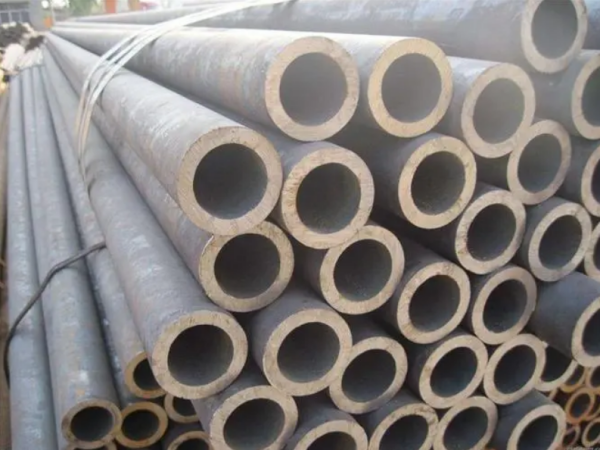Mild steel tube hydroforming is an advanced metal plastic forming method. It expands the pipe by applying high-pressure medium (usually emulsion) to the inside of the metal pipe, and gradually fits the mold. At the same time, in order to reduce the thinning rate of the bulging zone , during the pressurization process, the punches at both ends of the tube blank are pushed inward to realize axial feeding, and finally formed into a processing method of a specific shape part. Because of the high pressure required for forming, pipe hydroforming is also called internal high pressure forming. Hydroforming technology, as a precision forming technology for manufacturing complex-shaped thin wall plate tube parts, is conducive to the lightweight, high-precision and integrated development of equipment. It is a processing technology developed to form hollow variable-section tubular members characterized by light weight and integration. It is of great significance to the development of manufacturing technologies in industries such as automobiles, aviation, aerospace, and ships.

For hollow variable-section metal parts with complex surface shapes, the traditional processing method is to divide the parts into two or more parts, use sheet metal stamping to process them separately, and then weld these parts into an integral part. This processing method generally requires multiple sets of processing molds. When the parts are thinner, welding is more difficult. It is difficult to guarantee the sealing and strength after welding, and it is also difficult to detect the sealing. Compared with the traditional stamping and re-welding technology, the advantages of pipe hydroforming are very obvious: the overall forming reduces the quality and saves materials; reduces the number of parts and molds, reduces the cost of molds and welding; reduces the amount of subsequent machining and assembly welding; reduces production cost. The huge advantages of pipe hydroforming make it favored by many enterprises. In the 1990s, the automobile industry in Europe and the United States took the lead in realizing the mass production of hydroformed parts.
Today, as automobile lightweight and energy saving and emission reduction are increasingly valued, its role will also increase day by day. There are many factors that affect the forming quality of pipe hydroformed parts. Factors such as pressurization method, friction coefficient, amount of axial feeding, and the combination of pressure and feeding will affect the forming quality. Through a large number of experiments, the forming conditions of the free bulging zone of low carbon steel pipe under pulsating pressure and constant pressure loading were compared, combined with stress analysis and existing theories, it was proposed that pulsating pressure can improve the forming quality, and can effectively prevent necking, bursting and Wrinkling and other defects, but the bulging of mild steel pipes has not been compared with other forms of pressurization. Because the relevant equipment is too expensive, the method of numerical simulation is often used to provide reference for actual production. The effect of pressurization on hydraulic bulging is studied by numerical simulation, and the forming quality of the bulging zone under single-line pressurization, pulsating pressurization and broken-line pressurization is compared.
Based on the CAE software Dynaform for sheet metal forming simulation, the free bulging of low-carbon steel pipes under different pressurization methods was studied, and the effects of three pressurization methods, single-line pressurization, broken-line pressurization and pulsating pressurization, on the bulging quality were compared. At the same time, the influence of different gradients of loading pressure on forming was studied under broken line pressurization; under pulsating pressurization, the influence of different base pressure, pulsation amplitude and axial feed rate on forming was studied. The results show that the thickness of the bulging zone of the pipe is higher and the forming quality is better under the pulsating pressure and the proper broken line pressure. Axial feed rate, pulsation amplitude and base pressure will all affect the forming result.
Through the simulation results and analysis, it can be obtained that for the hydraulic bulging of low carbon steel pipes:
(1) Single-line pressurization is the most common pressurization method, but its forming quality is poorer than reasonable pulsating pressurization and broken-line pressurization. The process can be improved by changing the pressure loading method to improve the hydraulic forming of pipes. parts quality.
(2) Under broken-line pressurization, different gradient pressures correspond to different high-pressure action times and average pressures, and the corresponding forming quality will also be significantly different.
(3) When the pressure loading form is pulsating pressurization, the amplitude of pulsating pressurization and the choice of base pressure will have a certain impact on the forming quality. The size of the axial feed rate will affect the size of the expansion radius.













 Eastern Steel Manufacturing Co.,Ltd not only improve product production and sales services, but also provide additional value-added services. As long as you need, we can complete your specific needs together.
Eastern Steel Manufacturing Co.,Ltd not only improve product production and sales services, but also provide additional value-added services. As long as you need, we can complete your specific needs together.










